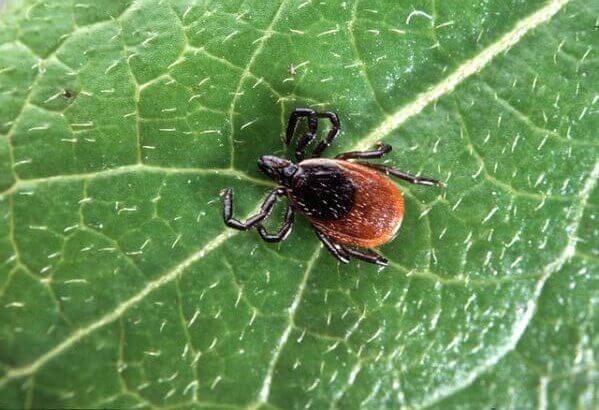Tick season is upon us, bringing with it the heightened risk of Lyme disease, and it appears that these minuscule arachnids are even hardier than previously believed.
According to a recent study published in Ecological Monographs, blacklegged ticks (Ixodes scapularis) have shown remarkable survival abilities in the face of extreme cold and heat in natural environments. Previous laboratory research had suggested that ticks, even during short periods of intense cold or heat, would easily perish. However, an analysis led by Washington State University has unveiled that this holds true only for larval ticks in the wild, while nymph and adult ticks are relatively unaffected by temperature fluctuations, succumbing to exhaustion rather than extreme conditions. These findings have the potential to provide valuable insights into the spread of Lyme disease and other vector-borne illnesses.
Lead author of the study, Jesse Brunner, an associate professor of biological sciences at WSU, explains, the team anticipated that if there were prolonged dry spells, all ticks would be at greater risk of dying. However, they observed that only the larvae were impacted by heat and dryness, and cold weather had even less effect. Somehow, they manage to endure and survive under challenging circumstances.
Blacklegged ticks are notorious carriers of pathogens responsible for various diseases, with Lyme disease being the most common vector-borne illness in North America. In recent years, these ticks have expanded their range significantly across the Eastern United States and the Midwest, defying previous assumptions about their preferred habitats. While climate change is believed to be a contributing factor, scientists have yet to definitively determine why ticks thrive in some areas while remaining scarce in others.
To address this knowledge gap, Brunner and a team of collaborators from the Cary Institute of Ecosystem Studies undertook an extensive field study at three US military bases along the East Coast. The study, funded by the US Department of Defense, involved placing over 9,000 ticks in soil core enclosures and meticulously monitoring their survival and development over a three-year period. The resulting data shed light on how ticks respond to different climatic conditions.
The research suggests that while extreme weather conditions do not appear to have as significant an impact on tick mortality as previously thought, they do accelerate the depletion of their food sources. This means that hotter weather may reduce the timeframe for ticks to find a suitable host for feeding. This effect was particularly noticeable in the case of tick larvae, whose median survival times were nearly halved when exposed to frequent periods of hot and dry weather.
The study also observed intriguing variations in tick mortality rates at a small scale. Soil core enclosures located just meters apart often exhibited drastically different rates of tick survival, with some containers showing an 80% survival rate while adjacent ones recorded no survival at all. The cause of these significant variations remains unclear, but the study’s findings suggest the influence of environmental factors such as arthropods or fungi.
Considering the public health implications of tickborne diseases, the research has wide-ranging significance. The study’s findings underscore the importance of targeting interventions during the larvae stage, when ticks are most vulnerable. By focusing on this developmental stage, researchers hope to develop effective strategies, including vaccinating host species to resist ticks, which could significantly reduce tick populations and mitigate the risk of disease transmission.
Looking ahead, the research team intends to delve deeper into the factors behind localized tick mortality and explore the role of host species, such as mice, deer, and yes, even humans, in tick survival.
The ultimate goal is to develop a comprehensive framework that can predict and effectively manage tick populations, Brunner asserts. This, in turn, could lead to improved public health outcomes.
In addition to Brunner, the study involved scientists from the Cary Institute of Ecosystem Studies, including Shannon LaDeau, Mary Killilea, Elizabeth Valentine, Megan Schierer, and Richard Ostfeld.
If our reporting has informed or inspired you, please consider making a donation. Every contribution, no matter the size, empowers us to continue delivering accurate, engaging, and trustworthy science and medical news. Independent journalism requires time, effort, and resources—your support ensures we can keep uncovering the stories that matter most to you.
Join us in making knowledge accessible and impactful. Thank you for standing with us!

